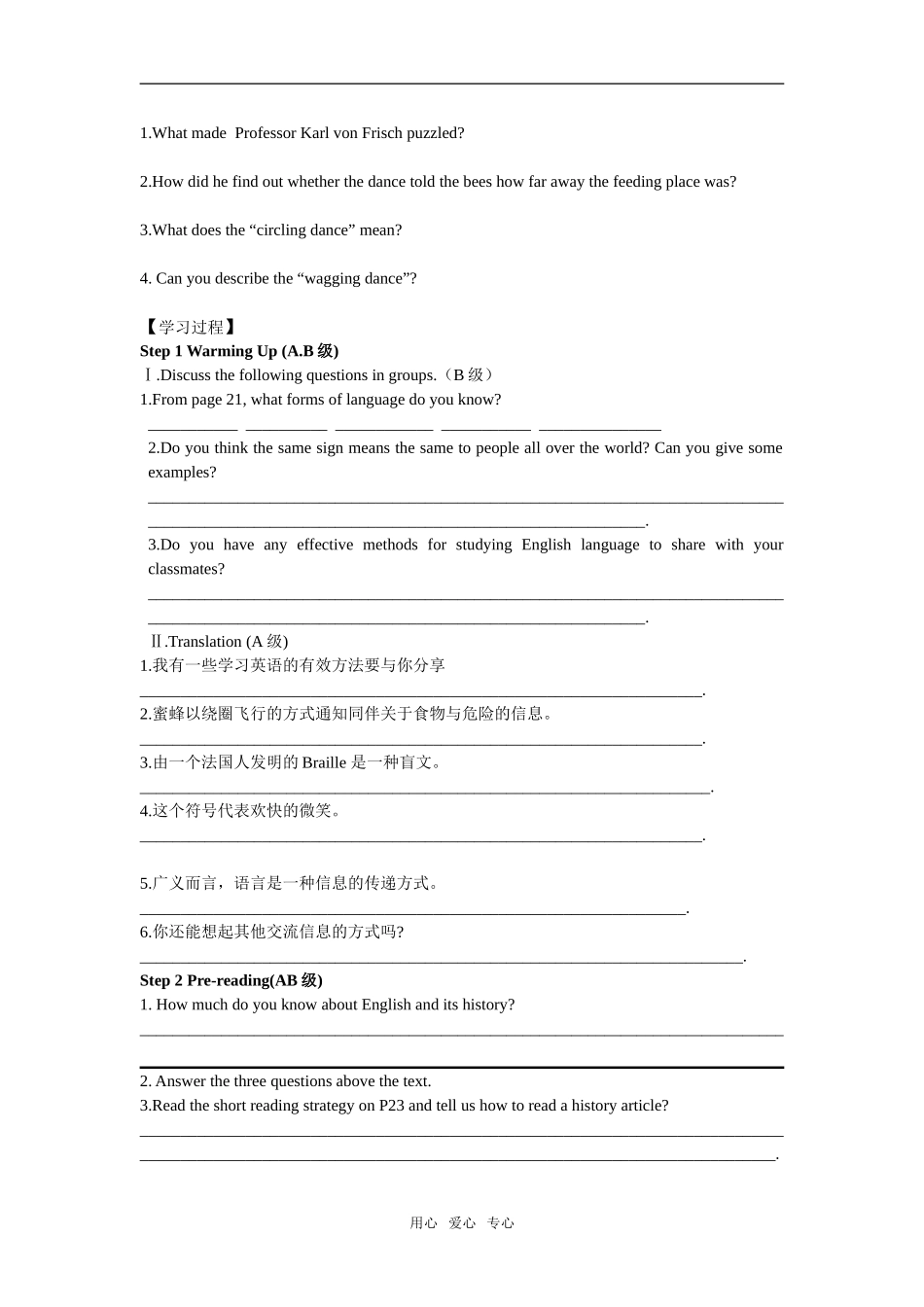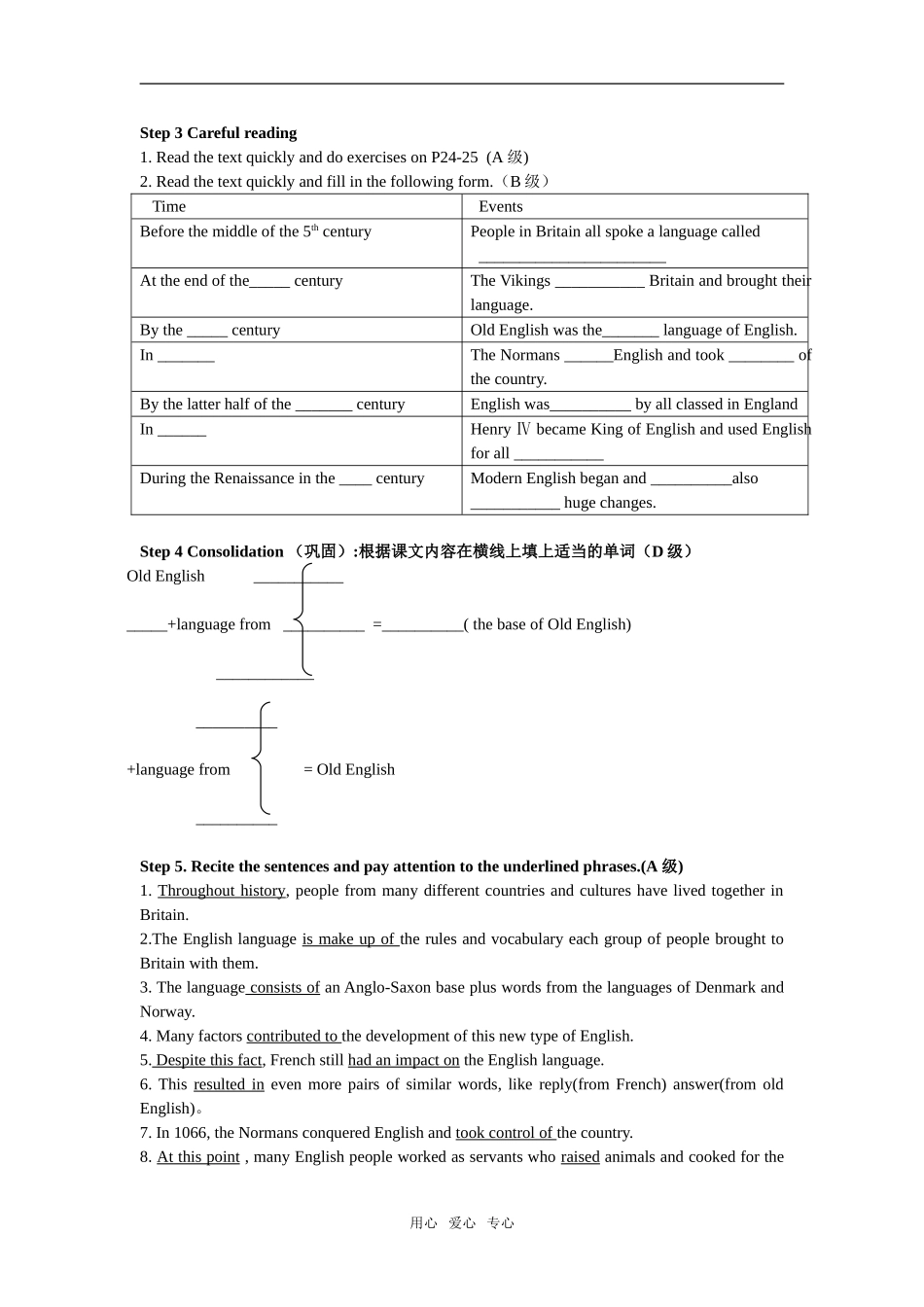Unit 2 language 导学案 Period 1 Reading: English and its history (1) 【学习目标】 1. 通过对课文的理解了解英语及其历史,2. 掌握阅读历史文章的阅读策略。3.背诵文中一些重点句型。【学习重点】通过对课文的理解训练学生的阅读能力,并掌握一些重点句型的应用。【学习难点】通过阅读文章训练学生的听说读写能力.【学法指导】掌握读历史文章的方法,采用多种方法对文章进行理解.【知识链接】阅读下列短文,回答文后问题。(C 级)The Language of Honey BeesThere are many different varieties of bee. Some live in large group like the honey bee, and make their nest in trees or holes in the rocks. Others types of bee make their nests in holes in the ground . There are also other varieties that do not live in groups at all. Among the different type of bee, it is the honey bee that has most interested scientists because of the “language” they use to communicate with each other. The development of the modern beehive in 1851 made it possible to design experiments to research the language of honey bees. Professor Karl von Frisch , an Australian scientist, spent many years of his life researching the amazing ways honey bees communicate in their dark hives. After working with bees for many years, Professor Von Frisch was puzzled by something he had noticed again and again . When he placed little dishes of honey on a table, bees soon came. As soon as one bee discovered the honey, many more came to it one after another in a short time. It seemed that one bee was able to communicate the news of food to other bees in its hive. How was this possible? To find out, Von Frisch built special hives, each with only one honeycomb. He built a glass wall through which he could watch what went on inside. In order to tell the bees apart, he painted some bees with ...


